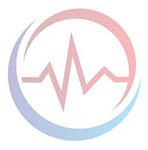Light Sources: Illuminating Healthcare Excellence
Light sources are vital components across various healthcare disciplines, enhancing visibility, precision, and accuracy in medical procedures, diagnostics, and therapies. These advanced illumination sources are pivotal in optimizing patient care, surgical interventions, and medical examinations. Whether used for surgical lighting, endoscopy, or imaging, light sources are integral in illuminating healthcare excellence and ensuring the success of medical practices.
Imaging Enhancement: Visual Diagnostics:
Light sources also contribute to medical imaging techniques like microscopy, radiography, and diagnostic imaging. In microscopy, adjustable light sources enable scientists to view samples at optimal contrast and brightness. For radiography and imaging modalities, consistent and calibrated light sources ensure accurate capture of medical images, aiding in accurate diagnoses and treatment planning.
Benefits of Light Sources:
Optimal Visibility: Light sources enhance visibility during medical procedures, minimizing shadows and facilitating precision.
Tailored Illumination: Adjustable features such as intensity and color temperature allow customization to suit specific medical requirements.
Enhanced Imaging: Light sources provide high-quality imaging, enabling accurate diagnostics and treatment planning.
Consistency: Well-calibrated light sources provide consistent illumination, ensuring reliable results in medical examinations and procedures.
Features of Light Sources:
Adjustable Intensity: Many light sources offer adjustable brightness levels to accommodate different medical scenarios.
Color Temperature Control: Certain light sources allow control over color temperature, creating optimal lighting conditions for different procedures.
Compatibility: Light sources are designed to be compatible with various medical equipment, including surgical lights, endoscopes, and imaging devices.
Applications of Light Sources:
Surgical Procedures: Light sources are essential for illuminating surgical fields, enabling surgeons to perform with precision.
Endoscopy: Light sources provide illumination for clear visualization within the body.
Medical Imaging: Light sources provide accurate medical imaging, supporting diagnostics and treatment planning.
Conclusion: Light sources are fundamental to healthcare, providing the illumination necessary for medical excellence across various procedures, examinations, and diagnostics. By offering tailored illumination, enhancing visibility, and contributing to high-quality imaging, these sources play a vital role in elevating patient care and ensuring the success of medical interventions. Recognizing the significance and features of light sources is essential for healthcare professionals seeking to optimize medical practices and deliver exceptional patient outcomes.














